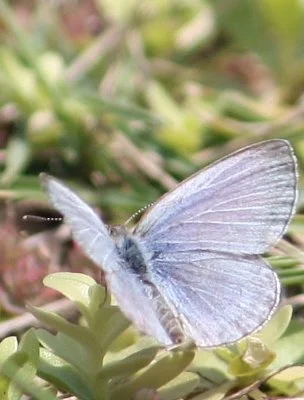Exposure to radioactive material released into the
environment have caused mutations in butterflies found in Japan, a study
suggests.
August 13, 2012
Biologist on Mutated Butterflies: Study is overwhelming in
its implications for humans ~ Japan Researcher: Insects were believed to be
very resistant to radiation ~ Irregularly developed eyes, malformed antennae,
much smaller wings (PHOTO)
The study found that mutation rates were much higher among
butterfly collected near Fukushima
Source: Scientific Reports
Scientists found an increase in leg, antennae and wing shape
mutations among butterflies collected following the 2011 Fukushima accident.
The link between the mutations and the radioactive material
was shown by laboratory experiments, they report.
[...]
the team found that areas with greater amounts of radiation
in the environment were home to butterflies with much smaller wings and
irregularly developed eyes.
[...]
It was by breeding these butterflies that they began
noticing a suite of abnormalities that hadn’t been seen in the previous
generation – that collected from Fukushima – such as malformed antennae, which
the insects use to explore their environment and seek out mates.
.
Six months later, they again collected adults from the 10
sites and found that butterflies from the Fukushima area showed a mutation rate
more than double that of those found sooner after the accident.
[...]
the findings from their new research show that the
radionuclides released from the accident were still affecting the development
of the animals, even after the residual radiation in the environment had
decayed.
[...]
Lead researcher Joji Otaki from the University of the
Ryukyus, Okinawa
“It has been believed that insects are very resistant to radiation”
“In that sense, our results were unexpected”
“[Because] this butterfly is found in artificial environments – such as gardens and public parks – this butterfly can monitor human environments”
University of South Carolina biologist Tim Mousseau, who
studies the impacts of radiation on animals and plants in Chernobyl and
Fukushima, but was not involved in this research
“This study is important and overwhelming in its implications for both the human and biological communities living in Fukushima”
“These observations of mutations and morphological abnormalities can only be explained as having resulted from exposure to radioactive contaminants”
RELATED POSTS
Study:
Significant decrease in abundance of Fukushima birds and butterflies as
radiation levels increase -NYT July 12, 2012
Neurobiologist:
Could Fukushima produce bacteria resistant to antibiotics? ~ Radiation a sure
way to stimulate mutations January 9, 2012



No comments:
Post a Comment
If your comment is not posted, it was deemed offensive.